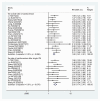Efficacy and safety of modified Valsalva maneuver for treatment of paroxysmal supraventricular tachycardia: a meta-analysis
- PMID: 38235710
- PMCID: PMC10798081
- DOI: 10.1177/03000605231220871
Efficacy and safety of modified Valsalva maneuver for treatment of paroxysmal supraventricular tachycardia: a meta-analysis
Abstract
Objective: To compare the efficacy and safety of the modified versus standard Valsalva maneuver in the treatment of paroxysmal supraventricular tachycardia (PSVT).
Methods: The PubMed, Embase, Web of Science, CNKI, WanFang Data, and VIP electronic databases were searched to identify studies comparing the modified and standard Valsalva maneuvers in the treatment of PSVT from database inception to 1 May 2023. Two reviewers independently screened the literature, extracted the data, and assessed the risk of bias of all included studies.
Results: Nineteen randomized controlled trials involving 2527 patients with PSVT were included. The overall rate of cardioversion was higher in the modified than standard Valsalva group (risk ratio [RR] = 1.80, 95% confidence interval [CI] = 1.61-2.01), as was the success rate of cardioversion after a single Valsalva maneuver (RR = 2.05, 95% CI = 1.74-2.41). There was no statistically significant difference in adverse reactions between the two groups (RR = 1.07, 95% CI = 0.82-1.38).
Conclusion: Current evidence suggests that the modified Valsalva maneuver can significantly improve the success rate of cardioversion in patients with PSVT without increasing adverse reactions. The modified Valsalva maneuver is therefore worth promoting and should be considered as a routine first treatment.INPLASY registration number: 2023100092.
Keywords: Paroxysmal supraventricular tachycardia; cardioversion; meta-analysis; modified Valsalva maneuver; randomized controlled trial; systematic review.
Conflict of interest statement
Declaration of conflicting interestsThe authors declare that there is no conflict of interest.
Figures
Similar articles
-
Comparative study of traditional versus nurse-assisted modified Valsalva maneuver for treating paroxysmal supraventricular tachycardia in orthopedic patients with limited lower limb activity.Medicine (Baltimore). 2025 May 2;104(18):e42264. doi: 10.1097/MD.0000000000042264. Medicine (Baltimore). 2025. PMID: 40324261 Free PMC article. Clinical Trial.
-
Comparing the success rates of standard and modified Valsalva maneuvers to terminate PSVT: A randomized controlled trial.Am J Emerg Med. 2017 Nov;35(11):1662-1665. doi: 10.1016/j.ajem.2017.05.034. Epub 2017 May 22. Am J Emerg Med. 2017. PMID: 28552271 Clinical Trial.
-
A multicenter randomized controlled trial of a modified Valsalva maneuver for cardioversion of supraventricular tachycardias.Am J Emerg Med. 2020 Jun;38(6):1077-1081. doi: 10.1016/j.ajem.2019.158371. Epub 2019 Aug 1. Am J Emerg Med. 2020. PMID: 31422858 Clinical Trial.
-
Management of acute paroxysmal supraventricular tachycardia in pregnancy.J Am Osteopath Assoc. 1991 Jan;91(1):51-2, 57, 61-2. J Am Osteopath Assoc. 1991. PMID: 1997460 Review.
-
Modified Valsalva maneuver for treatment of supraventricular tachycardias: A Meta-analysis.Am J Emerg Med. 2021 Dec;50:507-512. doi: 10.1016/j.ajem.2021.08.067. Epub 2021 Aug 31. Am J Emerg Med. 2021. PMID: 34536723 Review.
Cited by
-
Managing supraventricular tachyarrhythmia in pregnant patients within the emergency department.Front Cardiovasc Med. 2024 Dec 10;11:1517990. doi: 10.3389/fcvm.2024.1517990. eCollection 2024. Front Cardiovasc Med. 2024. PMID: 39720210 Free PMC article.
-
Comparative study of traditional versus nurse-assisted modified Valsalva maneuver for treating paroxysmal supraventricular tachycardia in orthopedic patients with limited lower limb activity.Medicine (Baltimore). 2025 May 2;104(18):e42264. doi: 10.1097/MD.0000000000042264. Medicine (Baltimore). 2025. PMID: 40324261 Free PMC article. Clinical Trial.
-
Valsalva Maneuver Versus Carotid Sinus Massage for Supraventricular Tachycardia: A Systematic Review and Meta-Analysis of Randomized Controlled Trials.Cureus. 2024 Sep 24;16(9):e70064. doi: 10.7759/cureus.70064. eCollection 2024 Sep. Cureus. 2024. PMID: 39449910 Free PMC article. Review.
References
-
- Lan Q, Han B, Wu F, et al.. Modified Valsalva maneuver for treatment of supraventricular tachycardias: a meta-analysis [J]. Am J Emerg Med 2021; 50: 507–512. - PubMed
-
- Brugada J, Katritsis DG, Arbelo E, et al.. 2019 ESC Guidelines for the management of patients with supraventricular tachycardia The Task Force for the management of patients with supraventricular tachycardia of the European Society of Cardiology (ESC) [published correction appears in Eur Heart J. 2020 Nov 21; 41(44): 4258] [J]. Eur Heart J 2020; 41: 655–720. - PubMed
-
- Zhang J, Tang HM, Yang L, et al.. Therapeutic effects of the modified simplified Valsalva maneuver in emergency treatment of paroxysmal supraventricular tachycardia [J]. Hebei Medicine 2021; 43: 2790–2792 + 2796.
-
- Song QQ, Wang Y, Zhang XH, et al.. Impact of modified Valsalva manoeuvre on patients with paroxysmal supraventricular tachycardia in emergency [J]. Practical Journal of Cardiac Cerebral Pneumal and Vascular Disease 2020; 28: 116–119.
-
- Liu AL, Liu JY, Zhang F, et al.. A retrospective analysis of cardioversion for paroxysmal supraventricular tachycardia in emergency department [J]. Chin J Emerg Med 2018; 27: 200–203.
Publication types
MeSH terms
LinkOut - more resources
Full Text Sources





